Key Takeaways
- Colorful belts can redefine your silhouette: The shade, intensity, and placement of a belt can visually alter proportions, accentuating or balancing various parts of your body.
- Strategic color combinations amplify impact: Coordinating a belt’s hue with clothing, accessories, or even footwear can create unity or contrast to shape how your figure is perceived.
- Experimentation encourages personal style growth: Don’t limit yourself to safe choices. Exploring unique colors, textures, and pairings leads to more flattering looks and a confident presence.
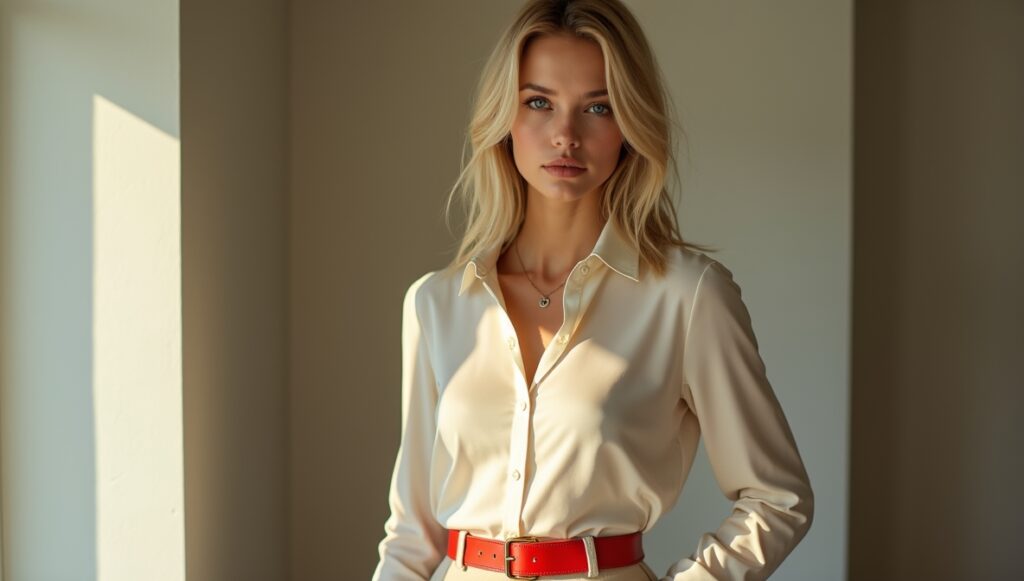
The Impact of Colorful Belts on Your Silhouette
Introduction
In a world where style often revolves around details, belts stand as quiet yet powerful contributors to how we look. They may seem small, but these accessories can redefine your entire silhouette. Colors, in particular, play a remarkable role. A bright red belt over a navy dress, a sage green strap over a cream blouse and trousers, or even a patterned belt with subtle hues—such touches can shift the eye’s focus, lengthen the torso, highlight a waistline, or introduce a fresh balance to your proportions. The subtle contrast or unity that a belt’s shade provides can bring out the best in your natural shape, making you look taller, leaner, or more proportioned.
Colorful belts aren’t just about adding a pop of interest. They are practical tools for shaping your overall appearance. With the right combination of hue, width, fabric, and placement, you can guide onlookers’ eyes to exactly where you want them. This article aims to break down all the nitty-gritty techniques, from selecting colors that flatter your body to pairing them with outfits you already own, and pushing your wardrobe boundaries into new territory. The result is a confident, curated look that’s truly you.
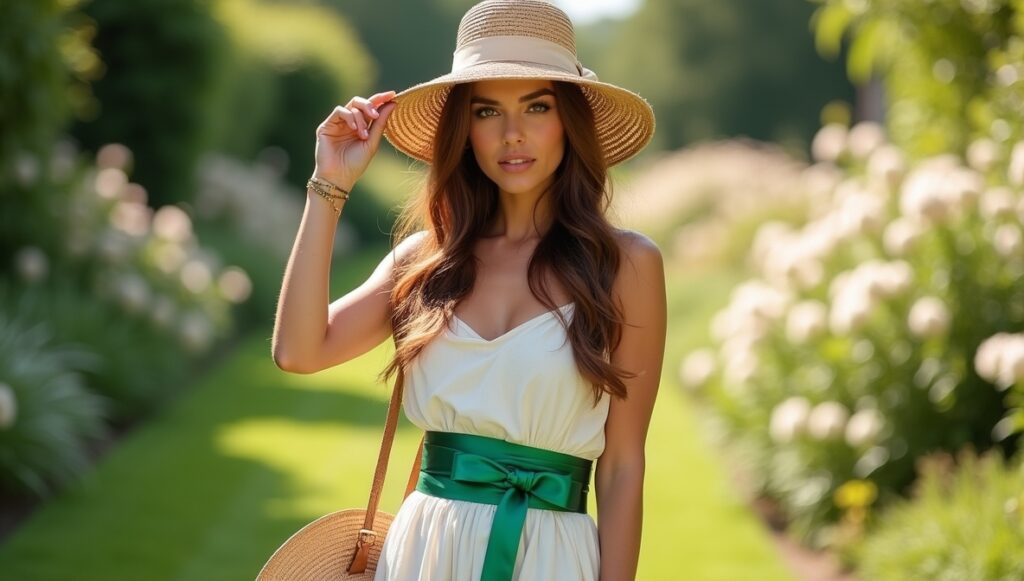
Below, you’ll find comprehensive strategies and ideas. Each section explores specific tactics, ensuring you have the insider knowledge to choose, style, and wear your belts in ways that profoundly impact your silhouette. It’s time to highlight your best features and transform your wardrobe, all with the subtle power of color.
Defining the Role of Colorful Belts in Shaping Your Silhouette
Understanding Color Placement for Illusion
Color placement is the secret sauce for shaping your figure. When you place a colorful belt at your waist, you create a visual checkpoint that can nip in your midsection. If you shift it higher or lower, you can elongate or shorten your torso. The color you choose acts as a guide, telling the eye where to pause and appreciate your proportions.
Bright vs. Muted Tones for Balance
Bright tones, like vivid yellows or electric blues, command attention. They can highlight your waist, pull focus upwards, or act as a dividing line that changes how your figure is read. Muted tones—think dusty roses, sage greens, or taupe—have a gentler effect. They subtly shape without shouting, working more cohesively with the rest of your outfit’s palette to refine your silhouette quietly.
Leveraging Contrast for Impact
A contrasting belt against your clothing color immediately attracts the eye, creating a visual “bridge” that can lengthen legs or streamline the torso. On the other hand, a belt that closely matches your top or bottom creates a continuous visual line, smoothing out any hard cuts. Both approaches can reshape your silhouette, depending on your style goal.
Choosing the Right Belt Color to Enhance Your Figure
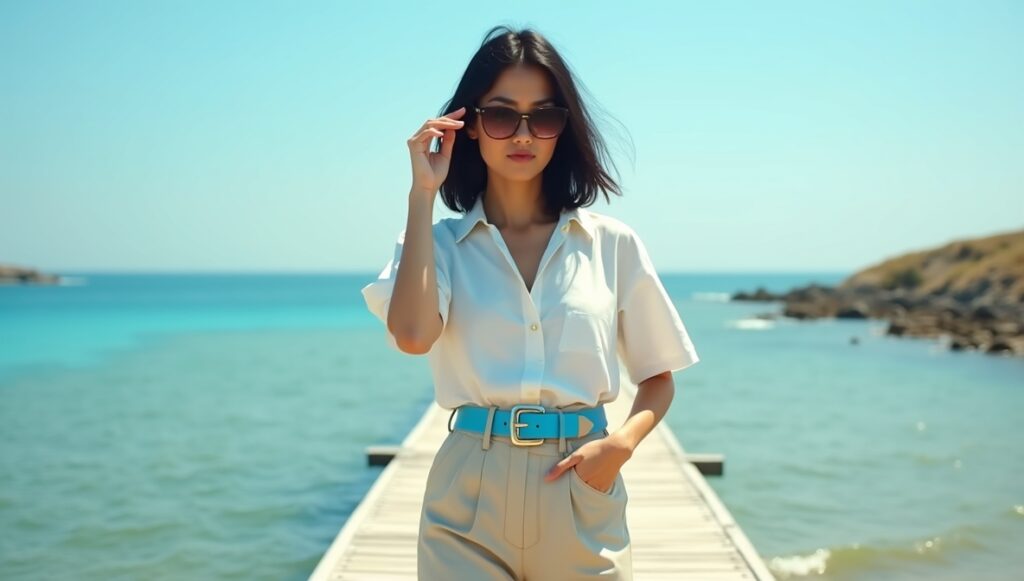
Coordinating With Your Outfit’s Dominant Hue
If your wardrobe leans towards warm tones—think earthy browns, terracotta dresses, or ivory tops—a warm-hued belt, like burnt orange or rich caramel, can create continuity. By reflecting the dominant outfit color, you smooth transitions, leading to a cohesive look that feels balanced and complementary to your natural shape.
Using Cooler Hues to Create Length
Cooler hues—navy, hunter green, charcoal—tend to have a slimming and lengthening effect. A cooler-toned belt worn at the waist can visually stretch your torso, making you appear taller. These belts work particularly well when paired with cooler outfits, like a grey knit sweater and black trousers, for a streamlined, elongated look.
Experimenting With Unexpected Color Pops
If you’ve ever felt your outfit looks too “safe,” consider a belt in a color you rarely wear. A pop of coral, chartreuse, or fuchsia can shift how your entire ensemble is perceived. These unexpected colors draw the eye to your midsection, helping define your silhouette in a fresh, dynamic way. The key is confidence—when you embrace a daring belt color, you encourage others to appreciate the new shape your outfit creates.
Matching Belt Colors to Fabrics and Textures
Contrasting Colors on Textured Fabrics
A textured garment—tweed skirts, ribbed dresses, chunky knits—offers a tactile dimension. Pairing a smooth, vibrant belt with a textured fabric heightens visual interest. The contrast in texture combined with the color pop can make your silhouette more defined as the belt line stands out clearly against a patterned or chunky background.
Tone-on-Tone With Luxurious Fabrics
Silk blouses, cashmere sweaters, or airy linens allow for subtle color pairings. A belt in a similar hue—say, a deep emerald belt over a forest green satin top—creates a refined, elongated line. This subtle harmony helps your silhouette appear sleek and uninterrupted, as the belt accentuates without feeling forced.
Mixing Colors With Patterns
For patterned outfits—florals, stripes, geometric prints—choose a belt color that picks up one of the subtle hues in the pattern. This trick ties the look together and neatly defines your waist. The viewer’s eye follows the pattern’s color echo straight to your belt, shaping your figure with sophistication and coherence.
Belt Color and Outfit Proportions
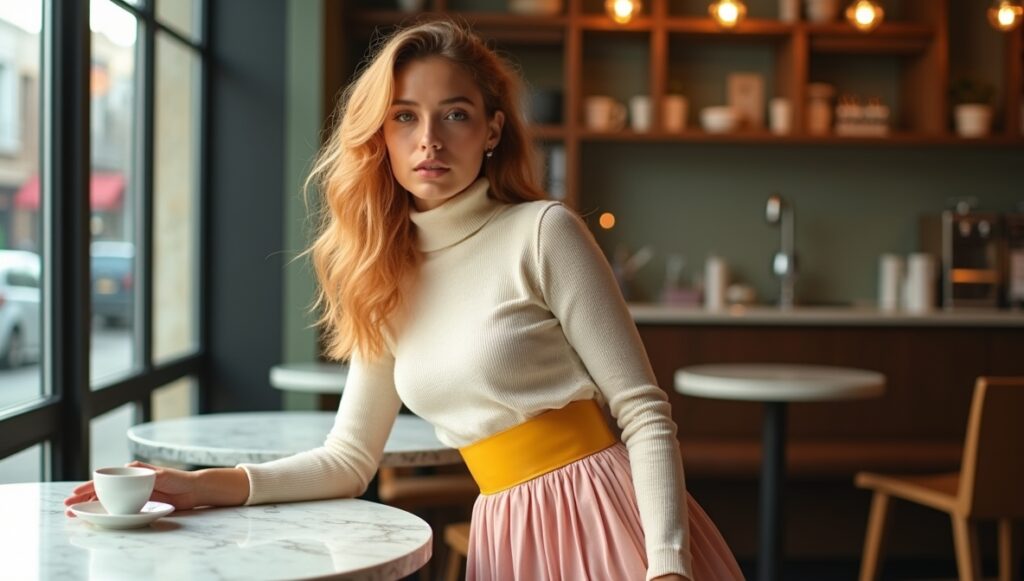
Balancing Proportions Through Contrast
If your outfit is top-heavy—like a billowy blouse—use a bold, contrasting belt on your waist to draw the eye inward. This creates a balanced hourglass impression. Conversely, if you’re wearing a form-fitting top and a flowing skirt, a belt in a color close to the skirt’s shade can keep attention moving smoothly along your figure, preventing a bottom-heavy look.
Creating Visual Length
A vertical line can be created by matching your belt color to either your top or bottom. If you wear a long cardigan in a rich hue and a belt that matches it, you extend a continuous line down your torso. This alignment visually lengthens your body, making your silhouette appear leaner and more streamlined.
Shortening the Torso or Legs Strategically
If you have a long torso and want to shorten it, pick a belt in a color that strongly contrasts with your shirt. The break in color at the waistline draws the eye upward, truncating the torso. Conversely, a belt that stands out against your pants can shorten your leg line. Strategic choice of belt color can shift your proportions to suit your desired silhouette.
Elevating Your Style With Seasonal Color Choices
Warm, Earthy Hues in Cooler Weather
As fall and winter come around, incorporate belts in shades like burgundy, olive, or caramel. Against heavier fabrics and darker wardrobes, these earthy tones create a warm, defined waistline. They also complement seasonal textures—like wool or suede—adding richness to your silhouette when layers might risk making you look boxy.
Fresh Pastels for Spring
Spring calls for pastels—mint, lavender, baby pink—to brighten your look. A pastel belt can provide a gentle contrast against a floral dress or a crisp white shirt and light denim, accentuating your waistline subtly. The soft color presence adds a youthful lift, visually shaping a more vibrant silhouette.
Bold, Tropical Tones in Summer
For summertime, dare to wear belts in bright turquoise, citrusy lime, or fiery coral. These vivid hues stand out against breezy fabrics and lighter clothing, carving a vivid waistline. In the sunlit months, a bold belt color can highlight your figure without feeling heavy or out of place, ensuring your silhouette remains defined despite looser seasonal attire.
Using Accessories to Support Belt Color
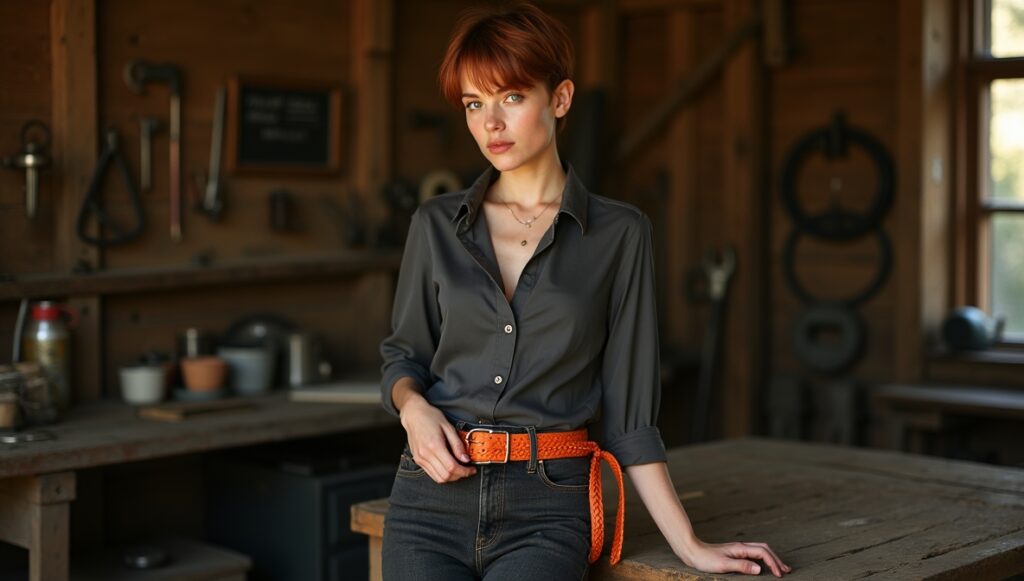
Coordinating With Shoes
Matching your belt color to your shoes frames your silhouette, providing a top-to-bottom outline that can be used to your advantage. If your shoes and belt share a bold hue, they create two anchor points. The eye connects these points, shaping your figure in a balanced manner, especially useful if the rest of the outfit is neutral.
Echoing Color With Jewelry
Delicate necklaces, bracelets, or earrings that echo the color of your belt help distribute that hue throughout your outfit. This subtle repetition prevents the belt from feeling like an isolated element. Instead, it becomes part of a carefully orchestrated color story that enhances your silhouette cohesively, guiding the eye along your body.
Incorporating Handbags
A handbag in a similar tone to your belt can influence how your shape is read. If the bag sits at waist level, its color harmony with the belt draws attention to that midpoint, emphasizing your natural curves. Aligning your accessories with your belt color produces a unified silhouette that feels polished and intentional.
Dressing for Specific Occasions With Colorful Belts
Workday Elegance
In a professional setting, a belt in a subdued, sophisticated color—navy, wine, mahogany—can shape a structured silhouette. Whether worn over a fitted blazer or a sheath dress, the belt’s hue refines your look without overstepping office norms. It makes you look confident, streamlined, and ready for business.
Casual Weekends
For laid-back days, experiment with playful colors like sky blue, sunflower yellow, or peach. These joyful hues can break up the monotony of denim and simple tees, giving your torso a defined midpoint. A casual yet colorful belt makes your relaxed silhouette seem more intentional and stylish.
Evening Events
Dressing up for dinner or a cocktail party? Consider rich jewel tones—emerald, ruby, sapphire—for your belt. Against a sleek black dress, these colors pop magnificently, highlighting the waistline and adding an element of luxury. The resulting silhouette is elegant, elevated, and perfect for a night out.
Adjusting Belt Placement for Maximum Effect
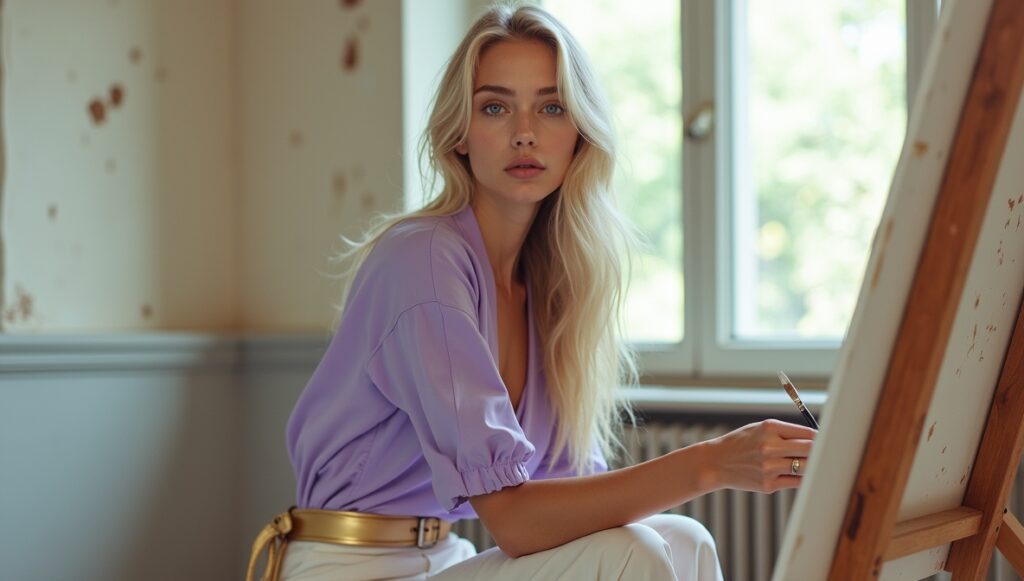
High-Waisted Positioning
Wearing your belt closer to the bust line (empire waist) can lengthen your lower half, making legs look longer. A bold-colored belt placed just under the bust can reshape your silhouette, shifting focus and adding a graceful flair. This technique works well with dresses or tunics that have some flow.
Mid-Waist for Classic Definition
The classic waistline belt placement—around your natural waist—is reliable for creating an hourglass shape. Here, a colorful belt becomes the center of attention. Whether you choose a contrasting or complementary color, this midpoint placement is the go-to option for definition and balanced proportions.
Low-Slung Belts to Elongate the Torso
For those who prefer a longer-looking torso, wearing a belt on the hips with a subtle color can give the illusion of a lower waistline. This technique stretches the visual length of your upper body. A belt with a low placement in a hue that blends slightly with your pants can result in a cool, laid-back silhouette.
Pairing Colorful Belts With Different Clothing Items
Dresses
On dresses, a vivid belt can break up a single color field, giving you shape and dimension. If the dress is A-line, a bright belt accentuates the waist, refining your figure. For a shift dress, a colorful belt can introduce curves where the garment is otherwise straight, sculpting a more defined silhouette.
Skirts
Skirts paired with belts can emphasize or downplay your waist. A belt color that contrasts with the skirt’s shade can draw attention to your midsection, making it look smaller. Meanwhile, a belt in a hue close to the skirt’s creates a seamless line, helping you appear longer, especially beneficial for midi or maxi skirts.
Pants and Shorts
When styling pants or shorts, a colorful belt can visually adjust your proportions. If you wear high-waisted pants, a belt that matches your top’s color can elongate your torso. For shorts, a contrasting belt can define your waist and prevent a top-heavy look. The chosen color can tighten the visual harmony of your outfit, shaping your silhouette with subtle but effective color cues.
Interpreting Different Hues for Your Personal Style
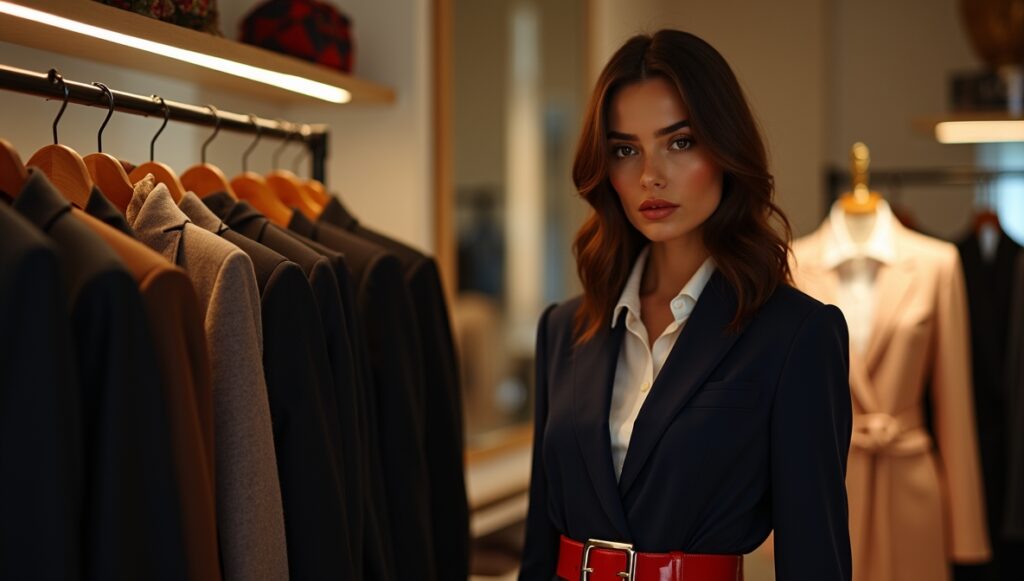
Neutral Colors With a Twist
Neutrals are often overlooked, but a belt in an off-white, gray, or soft tan can still be colorful in context. It’s about nuance. Even a subtle neutral belt can create a polished silhouette if it stands apart slightly from the surrounding tones. This approach is ideal if you’re shy about bold colors but still want silhouette definition.
Earthy and Rich Tones
Deep greens, browns, and rust shades have a grounding effect. Worn as belts, these colors work beautifully with natural fabrics like cotton, linen, or wool. They anchor your look and highlight the waistline without feeling harsh. Earthy tones suit a wardrobe rooted in understated elegance.
Vibrant and Electric Shades
Some days, you might crave the energy of a bright magenta, sunny orange, or cobalt belt. Such vivid shades bring a dose of excitement to your ensemble. They can transform a routine outfit into something attention-grabbing. The silhouette benefit? Your waistline becomes an instant focal point, streamlining your figure and projecting confidence.
Mixing Belt Colors to Craft Unique Looks
Double-Belt Layering
For the bold, consider layering two belts of different colors. Perhaps a slim red belt above a wider black belt. The interplay of hues and widths can reshape your silhouette by adding dimensional interest. Make sure the colors complement each other, and let this layering trick showcase your daring style.
Gradient Effects
If you own belts in varying shades of the same color, experiment with wearing them at different levels—one at the waist, another just below the hip line. This creates a gradient that guides the eye smoothly down your figure. This layered color approach can lengthen or compress your silhouette as you choose, depending on placement.
Accessorizing With Scarves or Sashes
Scarves or sashes tied as belts open up even more color possibilities. A floral scarf with multiple hues can reference your top and bottom, pulling the entire look together. By playing with patterns and colors in your belt alternatives, you can dial up or down your silhouette’s definition, always ready to adapt to the moment.
Overcoming Common Challenges When Using Colorful Belts
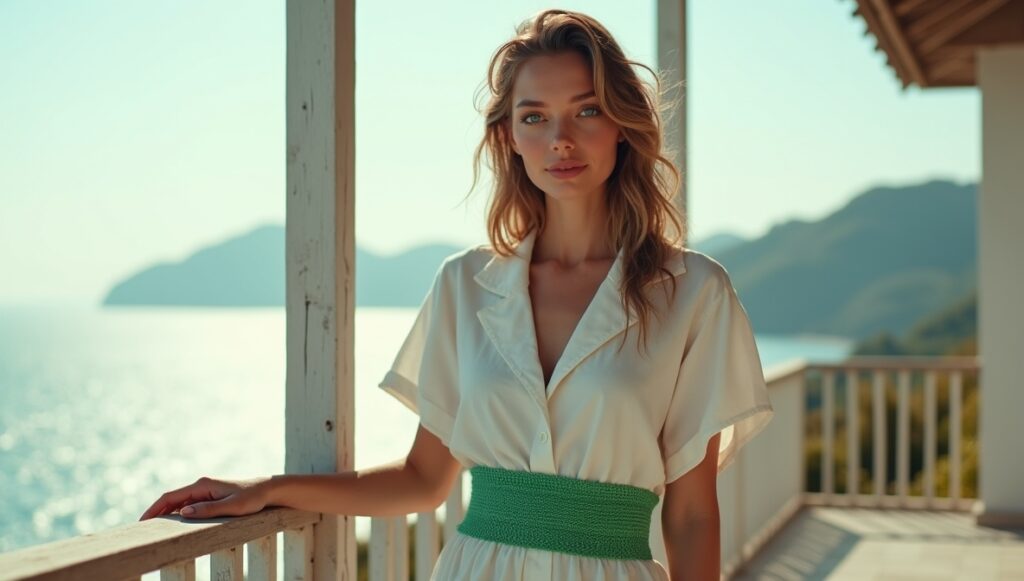
Avoiding Overwhelm
A colorful belt should enhance, not overpower. If you feel overwhelmed, pick one element of your outfit to complement. For instance, a belt that matches a subtle stripe in your blouse can do the trick. Start small and build comfort. Over time, you’ll find more ways to use that color boldly without feeling cluttered.
Handling Busy Patterns
If your outfit’s pattern is already loud, choose a solid belt color that calms things down. A belt in a muted or grounding hue can anchor a chaotic pattern and define your waist. This technique prevents the silhouette from getting lost in visual noise, ensuring your figure remains front and center.
Adjusting for Different Body Types
No two bodies are alike. If you find a certain belt color placement unflattering, shift the position or switch the hue. A pastel belt might broaden your waist more than you’d like—try a deeper tone. If a bright belt makes you look top-heavy, pick a subtler color that blends more seamlessly. This adaptability ensures that colorful belts work for every unique shape.
Practical Tips for Building a Belt Collection
Start With Basics
Begin with a few belts in classic, versatile colors—navy, dark brown, maybe a warm camel. These staples complement many outfits and help you experiment with silhouette shaping. Once you feel comfortable, introduce more daring colors into your collection.
Add Seasonal Updates
As seasons shift, rotate in belts that reflect the new color palette outside. Spring’s pastels, summer’s brights, fall’s earth tones, and winter’s deep hues help you maintain silhouette control year-round. Constantly updating keeps your style evolving, ensuring you’re never stuck with one silhouette trick.
Consider Quality and Material
A good-quality belt maintains its shape and color vibrancy over time. This ensures consistency in how it shapes your silhouette. Leather belts, for instance, age well and often gain character, making them timeless tools for shaping your body line. Investing in quality ensures you get the most silhouette impact from every belt.
Applying Color Theory in a Practical Way
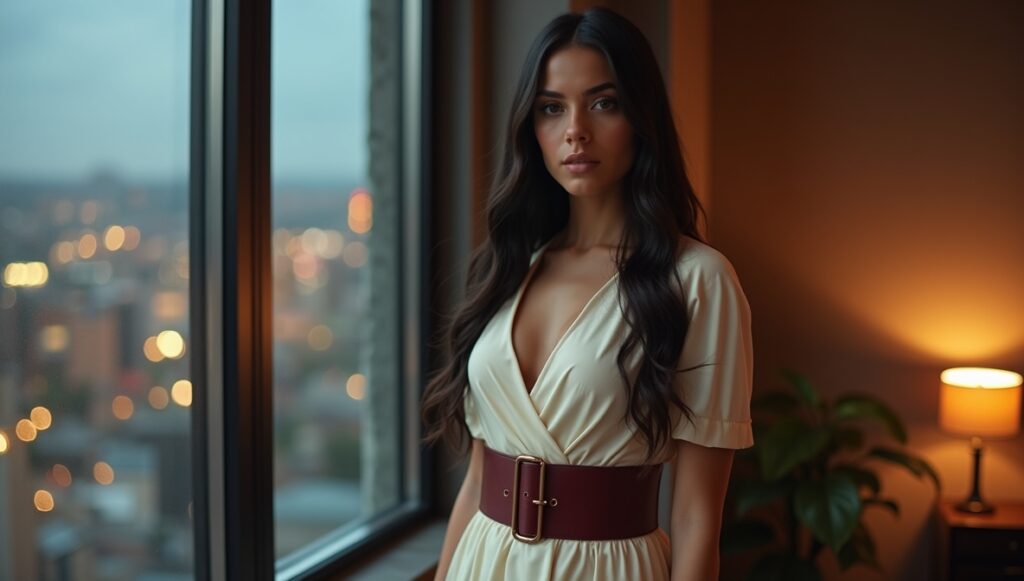
Finding Complementary Colors in Your Closet
Without diving deep into color psychology, you can still leverage basic color relationships. Pair belts with clothes in complementary hues—like a green belt with a red-toned top—to create dynamic contrast. The visual energy of complementary colors can be harnessed to accentuate your waist, shaping a more balanced silhouette.
Neutralizing Bold Colors With Subtle Tones
If you adore a certain bold belt but worry it’s too intense, pair it with neutral-toned clothing. By surrounding a bright belt with creams or greys, you control the visual flow. The belt stands out enough to define your silhouette without causing visual chaos.
Harmonizing Hues for Cohesion
A cohesive color scheme can stretch and shape your figure elegantly. If your top and bottom share related hues—a plum shirt with burgundy trousers—a belt in a mid-range wine shade draws the palette together. This subtle harmony refines your overall silhouette, making you appear well-proportioned and thoughtfully styled.
Problem-Solving With Colorful Belts
Hiding Mid-Section Concerns
If you want to downplay the tummy area, consider a belt in a hue close to your dress or top. The less visual contrast, the smoother the line, which can minimize attention on that area. This technique helps you embrace belts without feeling self-conscious, maintaining a polished silhouette.
Enhancing Curves
If you wish to highlight your curves, choose a belt color that pops. For those with a smaller waist, a bold belt can accentuate that asset. By drawing a line across your waist, you intensify the curve, making your silhouette look more defined and shapely.
Adjusting Length and Width With Color
If you feel too tall and lanky, a belt in a strong color placed at your natural waist can “break” your vertical line, creating a shorter, balanced silhouette. Conversely, if you feel short-waisted, a belt that blends with your top elongates that area. These small tweaks let you shape your figure to your liking.
Finalizing Your Look With Confidence
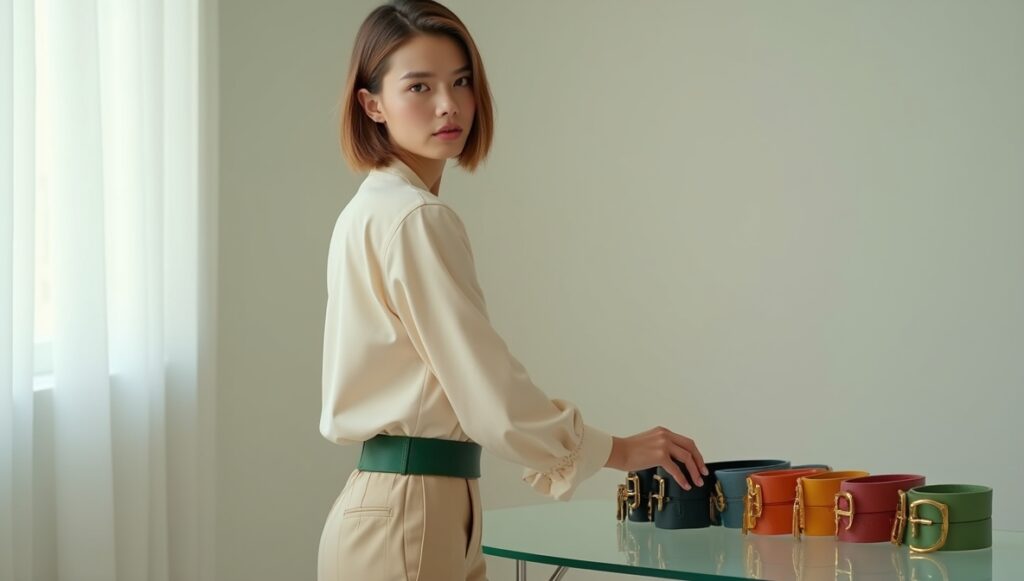
Standing and Moving With Intent
A colorful belt defines your silhouette, but your posture seals the deal. Stand tall, relax your shoulders, and walk with purpose. A well-chosen belt color that shapes your figure pairs best with confident body language. Together, they present a harmonious image that commands attention.
Tailoring the Outfit Around the Belt
Sometimes, start with the belt and build the outfit around it. This can lead to surprising style breakthroughs. If you choose a coral belt first, you might find yourself picking a cream top and olive trousers to complement it. By making the belt your centerpiece, you ensure its silhouette-shaping benefits are front and center.
Embracing Your Personal Taste
Ultimately, the best silhouette is the one that makes you feel good. Don’t feel pressured to follow rules too strictly. If a certain belt color makes you smile, wear it. If it seems to shape your figure in a pleasing way, trust your instincts. Personal style is about feeling comfortable and confident in your choices.
Conclusion
Colorful belts hold immense power in shaping your silhouette. By thoughtfully choosing hues that work with your clothing, experimenting with placement, and paying attention to details like contrast and harmony, you can redefine your look from head to toe. This isn’t about following rigid “fashion rules” but about understanding how color can serve your style goals.
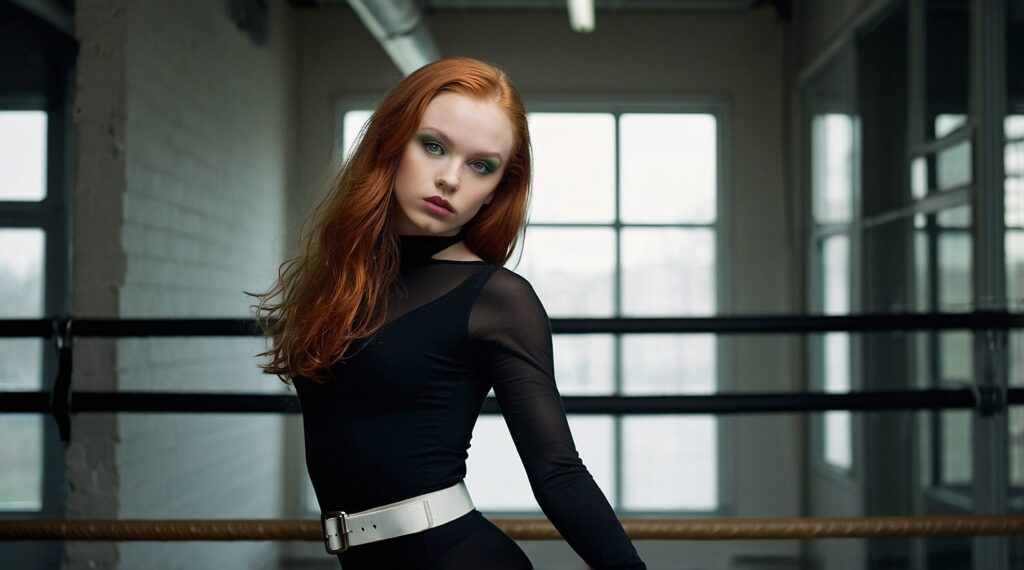
Whether you aim to appear taller, highlight your waist, or bring balance to your proportions, the right belt color can make it happen. You now have a comprehensive toolkit of techniques: matching colors to fabrics, echoing hues with accessories, trying seasonal variations, and more. As you begin to integrate colorful belts into your wardrobe, remember that experimenting is key. It’s through practice, trial, and discovery that you’ll find the perfect combinations that flatter and inspire confidence.
A well-chosen belt acts like a personal stylist, guiding the eye and adjusting the way your figure is viewed. Use this power to create a wardrobe that reflects your uniqueness. The impact of colorful belts on your silhouette is only limited by your willingness to explore. Let your creativity flow and enjoy the new dimensions it adds to your personal style.
Final Table: Belt Colors and Their Silhouette Effects
| Belt Color Example | When to Use | Silhouette Benefit |
|---|---|---|
| Bold Red | Over a monotone dress | Creates focal point at waist for a defined hourglass |
| Navy Blue | With matching pants | Extends vertical line, elongating the torso |
| Warm Caramel | Over earthy tones | Subtly cinches waist, adds richness without harsh contrast |
| Vibrant Turquoise | With neutral outfit | Introduces a pop that slims waist by drawing eye in |
| Soft Lavender | With pastel tops | Harmonizes with light hues, achieving gentle definition |
| Deep Burgundy | Over black garments | Adds contrast and depth, highlighting a sculpted silhouette |

FAQ
Q: Do I need to spend a lot of money on colorful belts to shape my silhouette?
A: Not necessarily. While quality often helps with durability, you can find budget-friendly options that still add the right color impact. Focus on hue and how it pairs with your wardrobe. Over time, invest in a few high-quality pieces that become go-to accessories for shaping your figure.
Q: How do I know which belt placement is right for me?
A: Experimentation is key. Try belts at different points—empire waist, natural waist, or lower at the hips. Observe how each position changes your body’s proportions. Your mirror is the best guide. With a bit of trial, you’ll discover the placement that feels most flattering and comfortable.
Q: Can I wear a colorful belt if I’m not into bold fashion statements?
A: Absolutely. Colorful doesn’t have to mean bright. You can choose subtle pastels or soft earth tones. Even a gentle shift in hue can influence your silhouette. Start small and see how a muted color affects your look. As you gain confidence, you might explore bolder shades.
Q: Will a colorful belt work with all types of outfits?
A: Almost any outfit can benefit from a well-chosen belt color. From casual jeans and tees to formal dresses, belts offer a quick way to define your waist and alter proportions. Just make sure the color aligns with the vibe of your outfit and doesn’t clash with key pieces.
Q: What if I don’t see a dramatic change in my silhouette?
A: Sometimes the effect is subtle and best appreciated over time. Take photos of yourself in different belt colors and placements to compare. Notice how the eye travels differently in each look. Even a small improvement in balance or definition can boost your confidence and style presence.
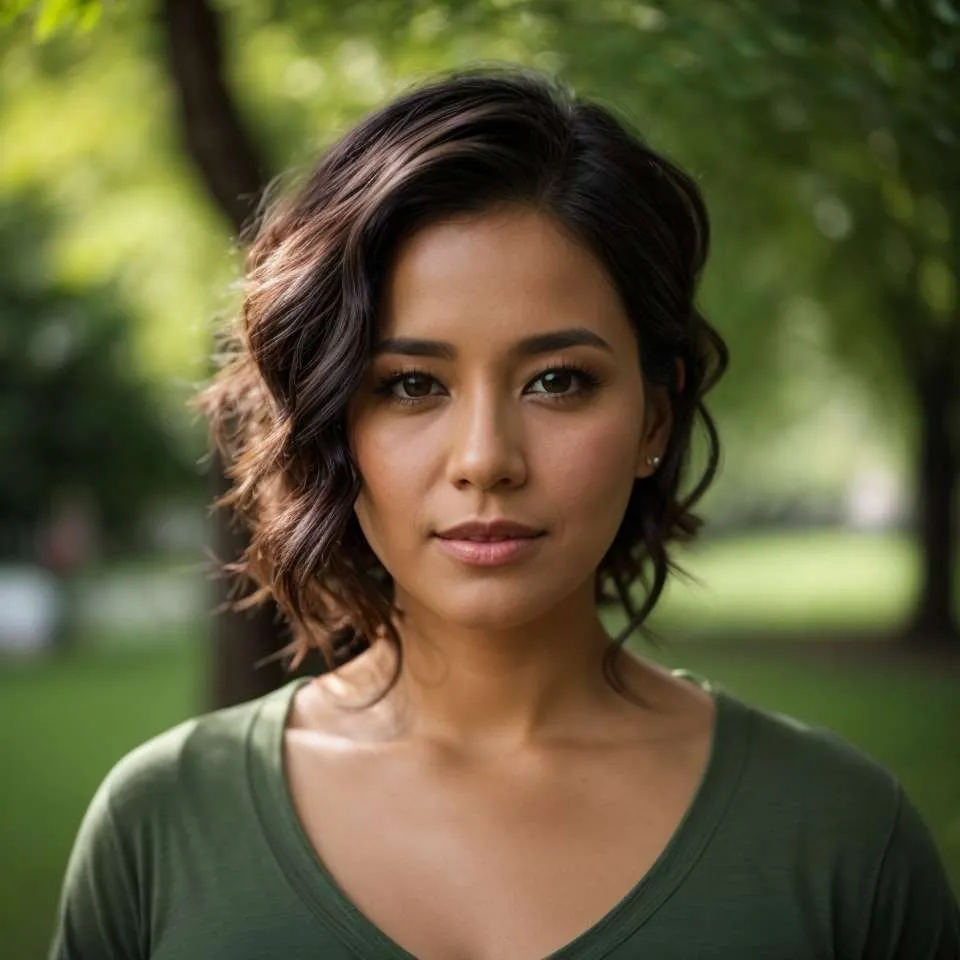
Joanna Perez, with a degree in Creative Writing, excels in recommending distinctive clothing color mixes and trends that deeply connect with readers. She simplifies the often daunting task of color selection, making fashion decisions more personalized and impactful. Her passion for vibrant color palettes and the stories they tell makes her an indispensable voice in the fashion community.
Reviewed By: Marcella Raskin and Anna West
Edited By: Lenny Terra
Fact Checked By: Sam Goldman
Photos Taken or Curated By: Matthew Mansour
